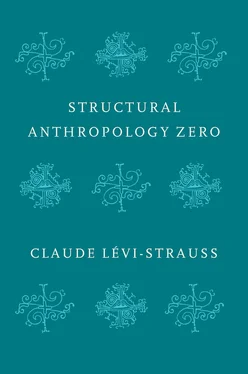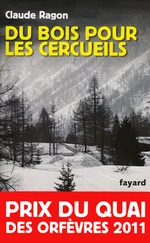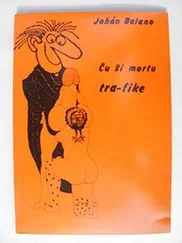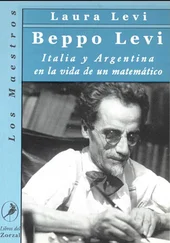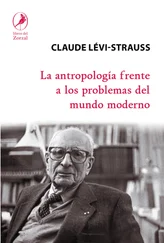Structural Anthropology was thus both more than and altogether different from collections of contributions artificially bound together by a title. This is also true of Structural Anthropology, Volume II , which came out in 1973 and whose organization is rather similar to that of the first volume: the “Perspective Views” that explore the history and pre-history of modern anthropology are followed by two sections, entitled “Social Organization” and “Mythology and Ritual,” closing with a final (and long) section entitled “Humanism and the Humanities.” Here again, the order reflected stages of thought, with chronology playing no part. The book even concludes with the essay “Race and History,” which had been first published twenty years earlier, in 1952; however innovative it might have been (and still is), this short treatise on cultural diversity and evolutionism had not found its rightful place within the architecture of the first volume – more affirmative and more disciplinary, less concerned with locating anthropology within a set of reflections that made the destiny of humanity its object – while it provided an ideal complement to meditations on the notions of humanism and progress.
Although its structure differed from that of the two previous volumes, The View from Afar – published in 1983 and which Lévi-Strauss would have gladly entitled Structural Anthropology, Volume III , had the adjective not by then become trite and “lost its content” due to its status as an intellectual “fashion” 3– obeyed the same principle. Less strictly anthropological, the book engages more directly with the theories and ideologies of its time, through a discussion of the various forms of constraint that weigh on human activity.
In any case, two conclusions may be drawn. First, the Structural Anthropology volumes were indeed conceived as books – i.e. as theoretical interventions into debates that they sought to shape and not as simple collections of essays. Second, the way Lévi-Strauss understood anthropology, its methods and objects, did not evolve much over the course of his career. The only true exception is probably with regard to the status of the distinction between nature and culture: initially presented (in The Elementary Structures of Kinship , in 1949) as an anthropological invariant, in line with social science since its origins in the eighteenth century, it became a distinction of “primarily methodological importance,” according to his formulation in The Savage Mind in 1962. 4With the exception of this shift, in keeping with his redefinition of the concept of symbol, 5Lévi-Strauss’s thought remained very faithful to a few governing principles, and its evolution has to do more with the diversity of objects to which it was applied than with any change in the “rustic convictions” (to quote Tristes Tropiques ) that guided his project.
A prehistory of structural anthropology
In 1957, Lévi-Strauss collected the seventeen articles that were to form Structural Anthropology , selecting them from among “some one hundred papers written during the past thirty years” (according to the brief preface he wrote for the occasion). In addition to two unpublished contributions, he settled on fifteen articles, the oldest of which had been published in 1944. The idea that Lévi-Strauss neglected the writings of his “youth” in favor of more recent work, which demonstrated greater intellectual maturity, is thus unfounded. Quite the contrary, the table of contents reflects the work of careful selection. This is the first observation at the origin of the present volume, Structural Anthropology Zero , 6which brings together seventeen articles that Lévi-Strauss rejected when he composed the 1958 volume. Some of his decisions are easily enough understood and, indeed, Lévi-Strauss himself offered explanations for them: “I have made a choice, rejecting works of purely ethnographic and descriptive character, as well as others of theoretical scope but the substance of which has been incorporated into my book Tristes Tropiques .” Other texts, such as “The Art of the Northwest Coast at the American Museum of Natural History” ( chapter XIIof the present volume), had probably appeared dated: the sense of wonder was still there, but progress in the discipline had rendered the theoretical point (in this case, diffusionist questions) obsolete. Finally, some of the studies seemed to have been superseded by more recent ones, as for instance “Indian Cosmetics” ( chapter XI), which, in 1942, had provided readers of the American surrealist review VVV with a detailed description of Kaduveo makeup, the in-depth analysis of which was yet to come in Tristes Tropiques . Similarly, the long presentation of “French Sociology” ( chapter I) must also have seemed outdated to Lévi-Strauss, superseded by his Introduction to the Work of Marcel Mauss , published in 1950. 7
We were thus left with a loss, which the present collection seeks to remedy. A loss because the final selection effectively excluded many insights – such as, for example, certain passages of “The Theory of Power in a Primitive Society” ( chapter VIII), on which Lévi-Strauss amply drew in Tristes Tropiques , yet whose remarkable final considerations on the notion of “natural power” were left out; or, to take another example, the very dense discussion of Durkheim’s work found in “French Sociology” but that did not find its way into the 1950 study on the work of Mauss – itself an important and difficult article, the much discussed “bible of structuralism,” into which the 1945 text on Durkheim provides much insight. 8But a loss also because Lévi-Strauss’s selection left out articles that did not fit with the theoretical project of Structural Anthropology yet played a major role in the development of other ideas outside the scope of structuralism. This is the case for both “War and Trade among the Indians of South America” ( chapter VII), as well as “The Theory of Power in a Primitive Society.” Both of these articles are essential references for social and political theories that take native societies of South America as examples of societies with low levels of material wealth and minimal political organization, and thus social forms that preceded the state and the primitive accumulation of capital – ideas in political anthropology, of which Pierre Clastres is the most notable illustration. 9The same can be said of the article “The Social Use of Kinship Terms among Brazilian Indians” ( chapter XIII). Whereas Lévi-Strauss had partially drawn on it for his minor dissertation The Family and Social Life of the Nambikwara Indians , the article was rediscovered by Brazilian scholars in the 1990s and has become, alongside other ethnographic works of the 1940s, a central reference for one of the most important developments in recent anthropology: the reconstruction of Amerindian ontologies through the extension of the notion of affinity with the non-human world. “Initially envisioned as an internal mechanism for the constitution of local groups, affinity has since appeared as a relational dynamic that organizes extra-local relations, articulates people and groups of people beyond kinship, and finally as a language and relational schema between Self and Other, identity and difference.” 10
Finally, we can easily see how “Techniques for Happiness” ( chapter VI), an amusing yet profound reflection on modern American society as Lévi-Strauss experienced it from the inside in the 1940s, did not fit into the theoretical collection he had in mind in 1957. Written in 1944 and published a year later in the journal L’Âge d’Or , it was subsequently republished in 1946 in a special issue of the journal Esprit on “Homo Americanus,” alongside contributions by American writers and thinkers (Kenneth Burke, Margaret Mead), as well as by other exiled intellectuals in the United States during the war (Georges Gurvitch, Denis de Rougemont). Its tone anticipated the more “liberated” meditations of the 1970s and 1980s (such as “New York in 1941” in The View from Afar and the texts of the posthumous collection We Are All Cannibals ) but, unlike these, the 1945 article conveyed a sense of concern, even anxiety, with an ample dose of the ambivalence of all participant observation. The text is imbued with a mixture of fascination for and rejection of North American society, which was rather commonplace at the time, but with a content that was quite original. As in the horrified pages of Tristes Tropiques on South Asia, it shows the anthropologist fighting his own aversions (for the almighty imperative of social harmony, the generalized infantilization, the impossibility of solitude, etc.) and attempting to overcome them in a theoretical comparison with European societies. If his aversion here is less visceral than in the descriptions of Calcutta crowds, the text also reveals a subjectivity grappling with its own discomfort and which, in an effort to distance itself from a purely reactive (or simply condescending) form of anti-Americanism, tries to grasp as accurately as possible, through formulations that are sometimes spot on, some of the fundamental traits of North American society: the heterogeneity with itself of a society whose “skeletal structure … is still external” (“alternately amazed and appalled, it discovers itself every day from the outside”); its repudiation of the tragic dimension through a “relentless” sociability; and the ideals of a “childhood without malice,” an “adolescence without hatred” and a “humanity without rancor” – a denial of the contradictions of social life that sometimes culminates, through a kind of return of the repressed, in conflicts between communities of an inordinate violence (p. 98). 11
Читать дальше
